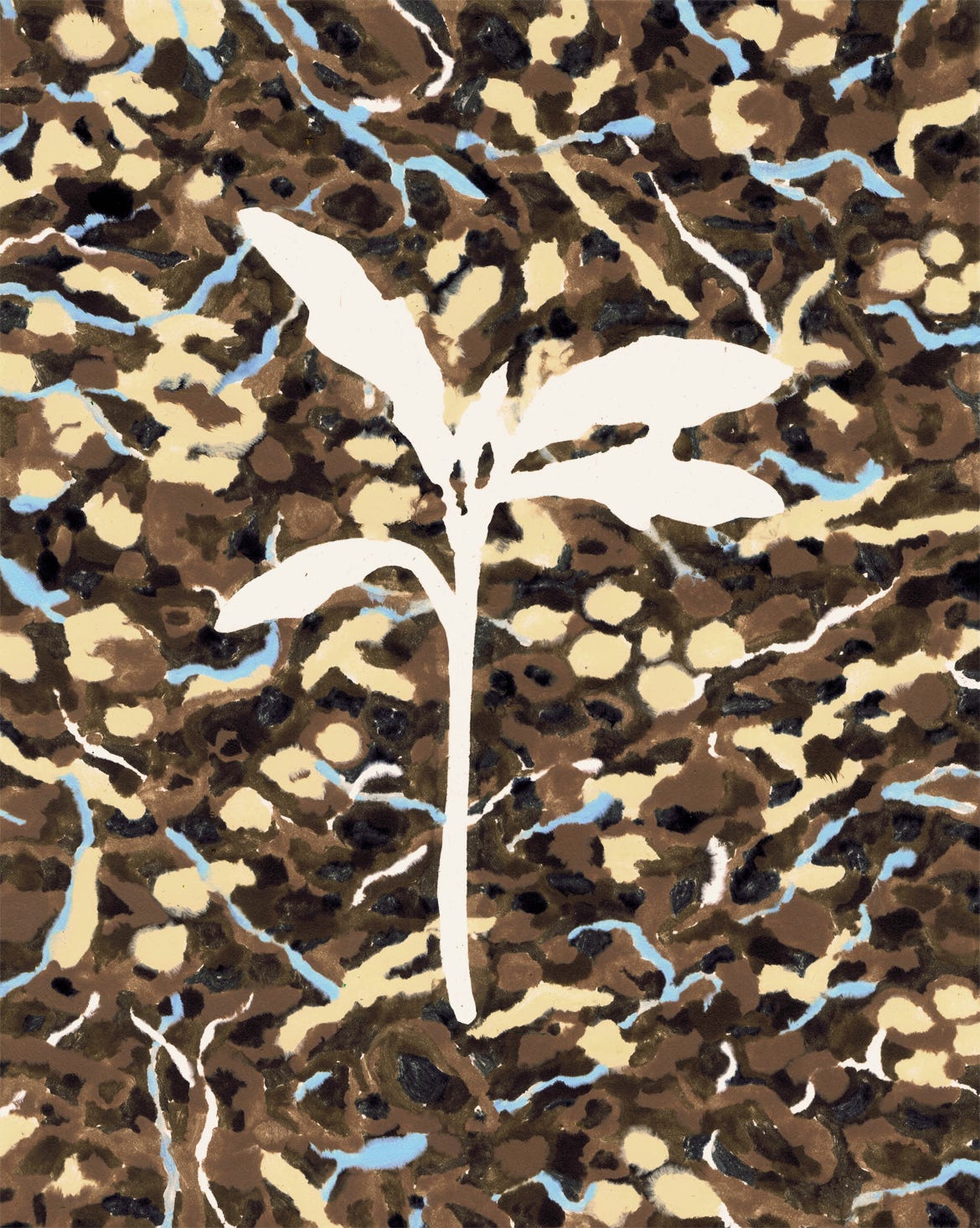In much the same way that constraints ease the process of making pictures, I have been trying out working under time conditions to help focus and practice writing. Below is a 20 minute exercise from the allotment, with a little bit of editing and work made in the studio in response. Thanks for reading!
Also, as a quick side note, my exhibition of original prints, In the current, has been extended a little bit. The work is up at South Street Kitchen, Sheffield until the 18th June and is well worth a visit if you’re in town. If not, you can see some images in the post below.
It’s Monday 19th May. Looks like it’s been snowing at the top end of the plot. Flecks of white dotted around, dusting the plants and sprinkling the ground. Caught in the breeze, the hawthorn blossoms loosening their hold on the trees and tricking the eye. They were ice white with frothy flowers a week ago but, looking up now, their glamour fades. A reddening as the petals fall and fruits form.
Things feel as though they are in full swing, with perennials already going to flower and annuals away in the earth. The iris and angelica next to my seat are opening up. The angelica, abundant, covered in hoverflies, solitary bees and honey bees and a slender, smooth red insect that I’m uncertain the name of. The pond surface is flecked with spent petals and opportunistic duck-weed. Under the surface the newts will be laying their eggs, carefully folding them into the twist of a leaf.
We’ve been giving some extra care to the young seedlings in the ground. I think it last rained something like 10, or 12 weeks ago maybe? Possibly more. Not a drop. Stories about the pressures this puts on big agriculture. The driest spring in 100 years. Reservoirs running dry. We feel it a little less on this tiny scale, with the work done to nurture the soil, but you can almost hear the roots scratching away for moisture underneath.
The broad beans are looking good though, wrapped in monochrome flowers with soft, green pods forming from the base upwards. Peas grappling their way up the hastily thrown together structures of bamboo and hazel canes. Tendrils holding on to the twine, heading towards the light. Away from the hungry beaks of the pigeons. We’ve dotted pea supports across all the annual beds in the hope that some will make it to fruition. This has the added benefit of utilising the nitrogen enriching qualities of the peas to help the development of the soil.
Kale, broccoli, spinach and spring onions are freshly in the ground, settling into their new environment. In the greenhouse, the tomatoes and chillies are making the most of the hot, sunny conditions. We sprinkled some vermicompost from the wormery onto these beds, full of nutrients and rich with a complex mix of microorganisms. A couple of weeks later and dozens of tiny tomato seedlings have sprouted in the mulch, alongside a handful of pumpkins. Volunteers that have made it through the composting process and are now taking full advantage of their warm, humid setting. Given that these have come from food waste from last year, it’s difficult to say what varieties they might be. Perhaps some Marina di Chioggia pumpkins, or the Jani tomatoes that did really well. We’ll leave them growing here for a while and then plant them out when they’re large enough. We can find out who the surprise volunteers are in a few months’ time.





